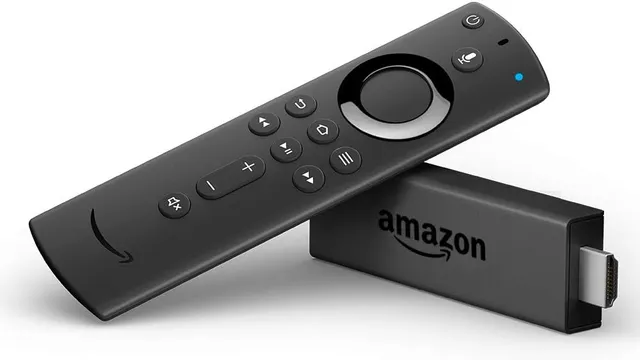Unveiling the Mysteries of the Firestick Plant: A Green Wonder or a Hidden Hazard?
Have you ever encountered a striking plant with vibrant, fiery hues that seem to defy the conventions of the botanical world? The firestick plant, with its bold and vivid appearance, often leaves people intrigued and curious. What secrets lie behind its fiery façade? Is it a botanical wonder or a potential hazard? These questions stir the imagination, and in this article, we will unravel the mysteries surrounding the enigmatic firestick plant.
In essence, the firestick plant, scientifically known as Euphorbia tirucalli, is a succulent native to Africa and Madagascar. Its unique characteristics make it a captivating addition to gardens and homes alike. However, as captivating as it may be, there are crucial considerations to address. With its latex containing toxic substances, the firestick plant demands cautious handling. In this piece, we delve into the distinct features of this botanical wonder, exploring both its aesthetic appeal and potential risks.
But these are just the tip of the proverbial iceberg when it comes to understanding the firestick plant. Renowned botanist Dr. Alexandra Greene, a leading authority in succulent research, lends her expertise to shed light on the plant’s lesser-known facets. As we navigate through Dr. Greene’s insights, we not only unlock the secrets of the firestick plant but also gain a deeper appreciation for the delicate balance between its allure and potential dangers. Ready to explore the world of the firestick plant? Let’s embark on a journey of discovery and knowledge that goes beyond its fiery exterior.

Exploring the Origins of the Firestick Plant
The Firestick Plant, scientifically known as Euphorbia tirucalli ‘Rosea,’ hails from the arid regions of Africa. Also commonly known as the Pencil Cactus or Indian Tree Spurge, this succulent is renowned for its slender, upright stems that resemble sticks, hence the name “Firestick.”
Key Characteristics of the Firestick Plant
The Firestick Plant is distinctive in appearance, with vibrant red and orange hues adorning its cylindrical stems. These stems, resembling thin pencils, are segmented and add a touch of exotic flair to any indoor or outdoor setting. It’s essential to understand the unique features of the Firestick Plant to provide optimal care and create an ideal environment for its growth.
Creating the Perfect Environment for Your Firestick Plant
Sunlight Requirements
The Firestick Plant thrives in bright, indirect light. Position your plant near a south or west-facing window to ensure it receives the right amount of sunlight. However, be cautious of prolonged exposure to intense sunlight, as it may lead to scorching.
Soil and Potting
Choosing the right soil mix is crucial for the Firestick Plant. Opt for a well-draining cactus mix combined with perlite to prevent waterlogging. Additionally, choosing an appropriately sized pot with drainage holes is essential for the plant’s overall health.
Watering Techniques
One of the common mistakes in caring for the Firestick Plant is overwatering. This succulent prefers a dry environment and should be watered sparingly. Allow the soil to dry out completely between watering sessions to prevent root.
Common Issues and Solutions When Caring for Your Firestick Plant
Congratulations on choosing the exquisite Firestick Plant for your botanical collection! While this resilient succulent is generally easy to care for, like any plant, it may face certain challenges. In this section, we will explore common issues encountered by Firestick Plant enthusiasts and provide effective solutions to ensure your plant thrives.
1. Yellowing or Dropping Leaves
Issue:
If you notice your Firestick Plant’s leaves turning yellow or dropping, it may be a sign of stress or incorrect care.
Solution:
- Check Lighting: Ensure your plant is receiving adequate bright, indirect light. Adjust its placement if it’s exposed to direct sunlight for extended periods.
- Watering Adjustments: Yellowing can result from overwatering or underwatering. Allow the soil to dry out between waterings and adjust your watering frequency accordingly.
2. Pests – Mealybugs and Spider Mites
Issue:
Mealybugs and spider mites are common pests that can affect the Firestick Plant, leading to visible damage.
Solution:
- Inspect Regularly: Regularly check the undersides of leaves and stems for signs of pests.
- Natural Remedies: Use natural remedies like neem oil or insecticidal soap to control infestations.
- Isolation: If pests are detected, isolate the affected plant to prevent the infestation from spreading.
3. Root Rot
Issue:
Root rot is a serious concern for Firestick Plants, especially if the soil remains consistently moist.
Solution:
- Well-Draining Soil: Ensure your plant is potted in well-draining soil to prevent water accumulation.
- Modify Watering Routine: Adjust your watering routine to allow the soil to dry out between waterings.
- Inspect Roots: If root rot is suspected, carefully inspect the roots. Trim away any rotting sections and repot the plant in fresh soil.
4. Fading Colors
Issue:
If the vibrant colors of your Firestick Plant start to fade, it may be an indication of insufficient light or aging.
Solution:
- Evaluate Light Exposure: Ensure your plant is placed in a location with bright, indirect light. Consider moving it to a sunnier spot.
- Age Consideration: As Firestick Plants age, their colors may naturally fade. This is a normal part of the plant’s life cycle.
5. Wilting Stems
Issue:
Wilting stems may occur due to various factors, including overwatering, underwatering, or environmental stress.
Solution:
- Assess Watering Practices: Check the soil moisture levels and adjust your watering frequency accordingly.
- Environmental Factors: Ensure the plant is not exposed to extreme temperature fluctuations, which can lead to wilting.
6. Leggy Growth
Issue:
If your Firestick Plant exhibits tall, leggy growth, it may be striving for more light.
Solution:
- Increase Light Exposure: Move the plant to a location with brighter, indirect light to encourage more compact and robust growth.
By addressing these common issues promptly and implementing the suggested solutions, you’ll be well on your way to maintaining a healthy and thriving Firestick Plant. Remember to observe your plant regularly, adjust care practices as needed, and enjoy the beauty it adds to your indoor or outdoor space. Happy gardening!
Propagation Methods: Growing Your Firestick Plant Family
Stem Cuttings
Propagation of the Firestick Plant is relatively straightforward, making it an excellent choice for plant enthusiasts looking to expand their collection. Using stem cuttings is the most common method. Here’s a step-by-step guide on how to propagate your Firestick Plant:
- Select a healthy stem.
- Allow the cut end to dry and callous for a day or two.
- Plant the cutting in a well-draining soil mix.
- Water sparingly until roots develop.
Seeds
While propagation from seeds is less common due to slower growth, it offers a fascinating insight into the plant’s life cycle. Sow the seeds in a well-draining mix and provide consistent warmth for optimal germination.
Common Pests and Diseases: Warding off Potential Threats
Mealybugs and Spider Mites
Mealybugs and spider mites are among the common pests that can affect the Firestick Plant. Keep an eye out for signs of infestation, such as webbing or white cottony clusters. Treatments include neem oil or insecticidal soap.
Root Rot
Overwatering can lead to root rot, a serious threat to the Firestick Plant. To prevent this, ensure proper drainage, and adjust your watering frequency accordingly.
Enhancing Your Landscape: The Allure of the Firestick Plant
When it comes to landscaping, the Firestick Plant (Euphorbia tirucalli ‘Rosea’) stands out as a striking and versatile choice. Its unique appearance and low-maintenance nature make it an excellent addition to both residential and commercial outdoor spaces. In this exploration of the Firestick Plant in landscaping, we’ll delve into creative ideas, optimal placements, and essential care tips to ensure this captivating succulent thrives in your outdoor haven.
1. Dramatic Focal Points
Adding a Touch of Drama:
The Firestick Plant’s slender, upright stems and vibrant red-orange hues make it a natural choice for creating dramatic focal points in your landscape. Consider planting a cluster of app in strategic locations to draw attention and add visual interest.
Optimal Placements:
- Entranceways: Frame entrances or gateways with Firestick Plants to create a captivating first impression.
- Outdoor Seating Areas: Enhance the ambiance of outdoor seating areas by incorporating the Firestick Plant for a touch of exotic beauty.
2. Sculptural Garden Borders
Crafting Artistic Edges:
Transform ordinary garden borders into sculptural masterpieces with the Firestick Plant. Its architectural form lends itself well to creating visually appealing edges that define the different sections of your landscape.
Optimal Placements:
- Pathways: Line pathways or walkways with Firestick Plants to guide the eye and add a sense of structure.
- Around Trees or Features: Use Firestick Plants to encircle trees or accentuate existing landscape features.
3. Container Gardening
Elevating Patio Spaces:
The Firestick Plant thrives in containers, making it an ideal choice for enhancing patios, balconies, or outdoor living spaces. Its adaptability to various container sizes allows for creative arrangements and easy mobility.
Optimal Placements:
- Potted Arrangements: Create captivating potted arrangements with Firestick Plants as the centerpiece.
- Vertical Gardens: Incorporate Firestick tv into vertical garden structures for a contemporary and space-efficient design.
4. Xeriscaping
Sustainable and Water-Wise Landscapes:
The Firestick Plant’s drought-tolerant nature makes it a perfect candidate for xeriscaping, a landscaping approach that conserves water and promotes sustainability. Its ability to thrive in arid conditions makes it an excellent choice for regions with water scarcity.
Optimal Placements:
- Rock Gardens: Integrate Firestick Plants into rock gardens for a harmonious blend of color and texture.
- Slope Plantings: Use Firestick Plants on slopes where their cascading stems can create a visually stunning effect.
5. Poolside Elegance
Adding Tropical Flair:
Create a tropical oasis by incorporating the Firestick Plant around pool areas. Its vibrant colors and minimal water requirements make it a practical and aesthetically pleasing choice for poolside landscaping.
Optimal Placements:
- Around Pool Edges: Plant Firestick Plants around the edges of the pool to add a touch of exotic elegance.
- Potted Poolside Plants: Place Firestick Plants in decorative pots near the pool for a sophisticated look.
6. Maintenance Tips for Outdoor Success
Ensuring Long-Term Beauty:
To maintain the Firestick Plant’s allure in your landscape, follow these essential care tips:
- Well-Draining Soil: Ensure the soil is well-draining to prevent waterlogged conditions.
- Pruning: Trim any dead or leggy growth to encourage a compact and healthy appearance.
- Protection from Frost: If you live in an area with occasional frost, consider providing protection during colder months.
Conclusion:
In conclusion, the Firestick Plant is a captivating addition to any plant collection, bringing a touch of the exotic to your living space. By understanding its origins, providing the right environment, and implementing proper care techniques, you can watch your Firestick Plant flourish. Whether you’re a seasoned plant enthusiast or a novice, the Firestick Plant is sure to become a centerpiece in your botanical haven. Embrace the beauty of nature and embark on a journey of nurturing and growth with the enchanting Firestick Plant.







